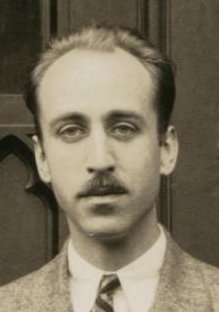Overview#
When do we use quantum mechanics?#
Quantum mechanics emerged to explain microscopic phenomena that is well outside of our sensory experience (for the most part). That is, it describes:
subatomic particles (electrons, protons, neutrons, quarks, photons,…)
nuclear physics
atomic physics
molecular dynamics
generation of structure in early-universe cosmology, according to standard inflationary theory
Conjecturally, big bang and black hole singularities
It also governs the collective behavior of matter at low temperatures, suitably defined, such as:
Superfluids
Superconductors
Cold atom systems
White dwarves and neutron stars (no, really)
Conjecturally, black holes (in the context of the black hole information problem)
At this point we should be asking “microscopic compared to what? Low temperature compared to what?” We hope to make this clear during the course. Clearly the dimensional quatity \(\hbar \sim 1.05 \times 10^{-34} m^2 kg/s\), with units of \((energy) \times (time)\), plays a role. For atomic physics, we are talking about scales of order angstroms, and energies of order electron volts.
Our own sensory experience is well outside of this regime; for our survival we need to detect animals of order meters, understand weather patterns and geography over kilometers, and so on. So it should not surprise us that quantum mechanics is in many ways very different from classical mechanics. My personal feeling is that much of the angst people feel over the odder implicatons of quantum mechanics stem from forgetting this large disparity between the scales of the quantum and classical worlds.
The importance of classical mechanics#
On the other hand, classical mechanics is still important:
It does an excellent job of making predictions in its regime of validity.
It provides a benchmark for quantum mechanics. Classical mechanics should emerge from quantum mechanics, if we are doing things right. This is a version of Bohr’s famous correspondence principle.
Basic structures and conceopts in classical mechanics (Hamiltonians, Lagrangians, the role of symmetries, and so on) have their counterpart in quantum mechanics, and understanding the former gives considerable insight into the latter.
Calculational techniques in quantum mechanics have surprising uses in classical mechanics and statistical mechanics.
So we will be spending time on both subjects.
Outline of the course#
This may change according to the level and interests of the class, particularly in the second semester.
PHYS 162a#
Lagrangian and Hamiltonian classical mechanics.
Linear algebra and Hilbert spaces. This is the correct language for quantum mechanics for very physical reasons; the linearity in linear algebra is tied directly to the fact that we can linearly superpose states to get new states and thus to phenomena such as the interference pattern of double-slit experiments.
The Rules of Quantum Mechanics
Applications to simple examples of one-dimensional nonrelativistic systems and simple two-state systems.
PHYS 162b#
The Feynman Path Integral
Symmetries in quantum mechanics.
Introduction to three-dimensional systems and angular momentum; the Hydrogen atom.
Approximation schemes for the time-independent Schrodinger equation:
Perturbation theory
Variational methods
WKB approximation (with an interlude for Hamilton-Jacobi theory and ray-tracing).
Approximation schemes for time-dependent problems.
Perturbation theory
Time permitting: adiabatic and sudden approximation, Born-Oppenheimer approximation.
Identical particles and second quantization.
